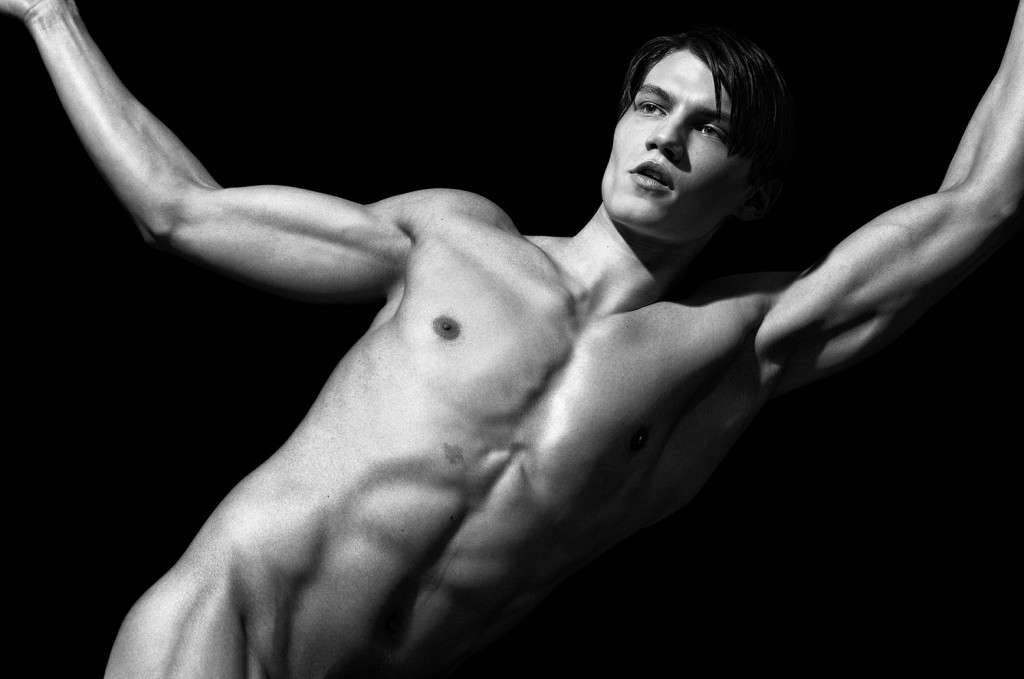
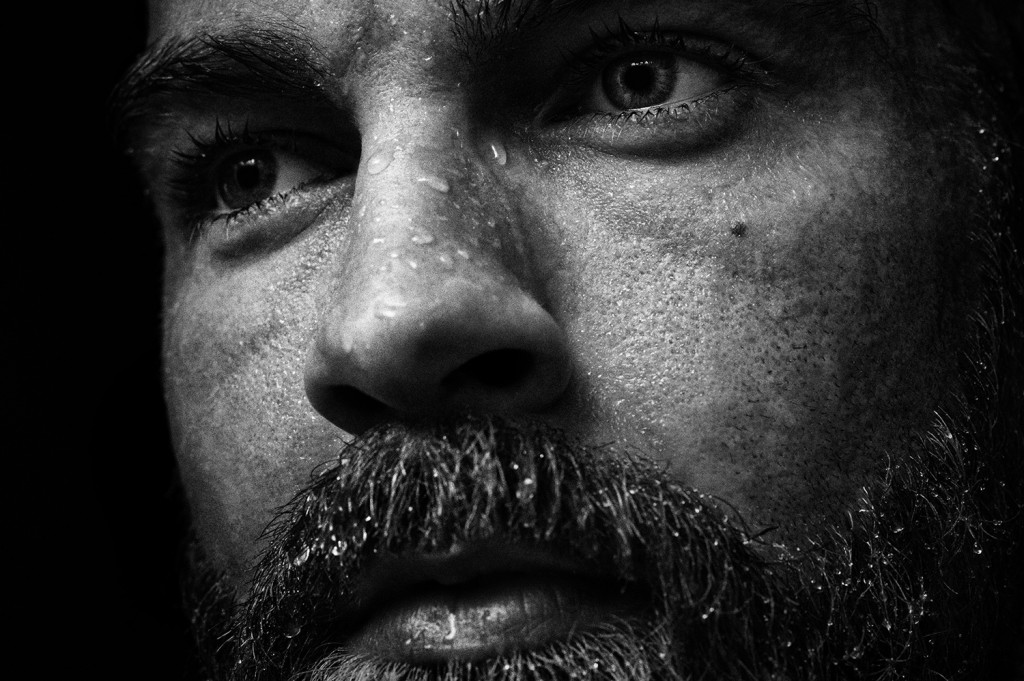
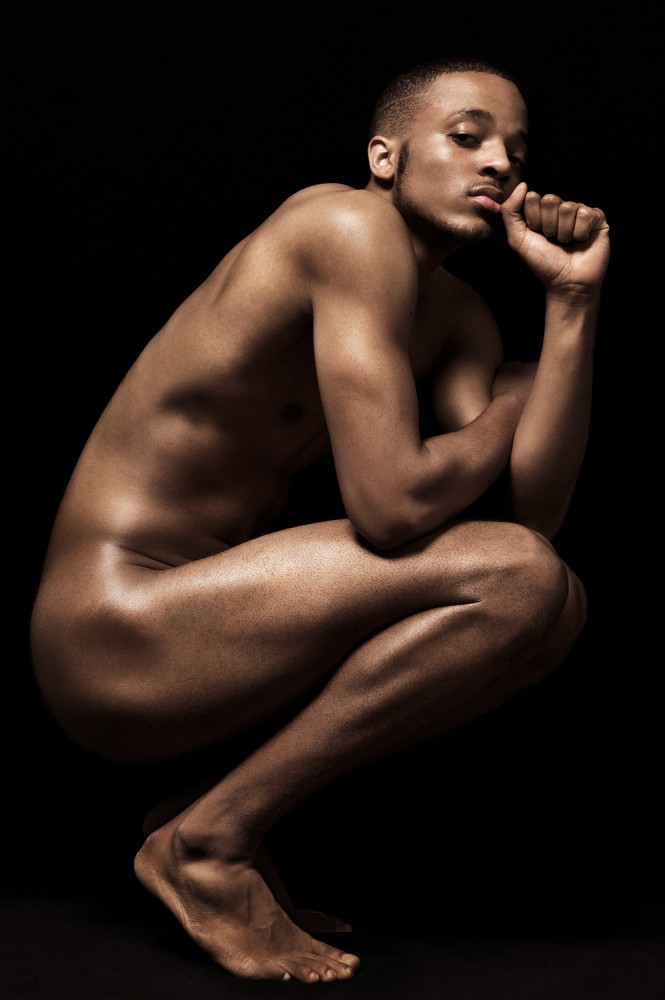
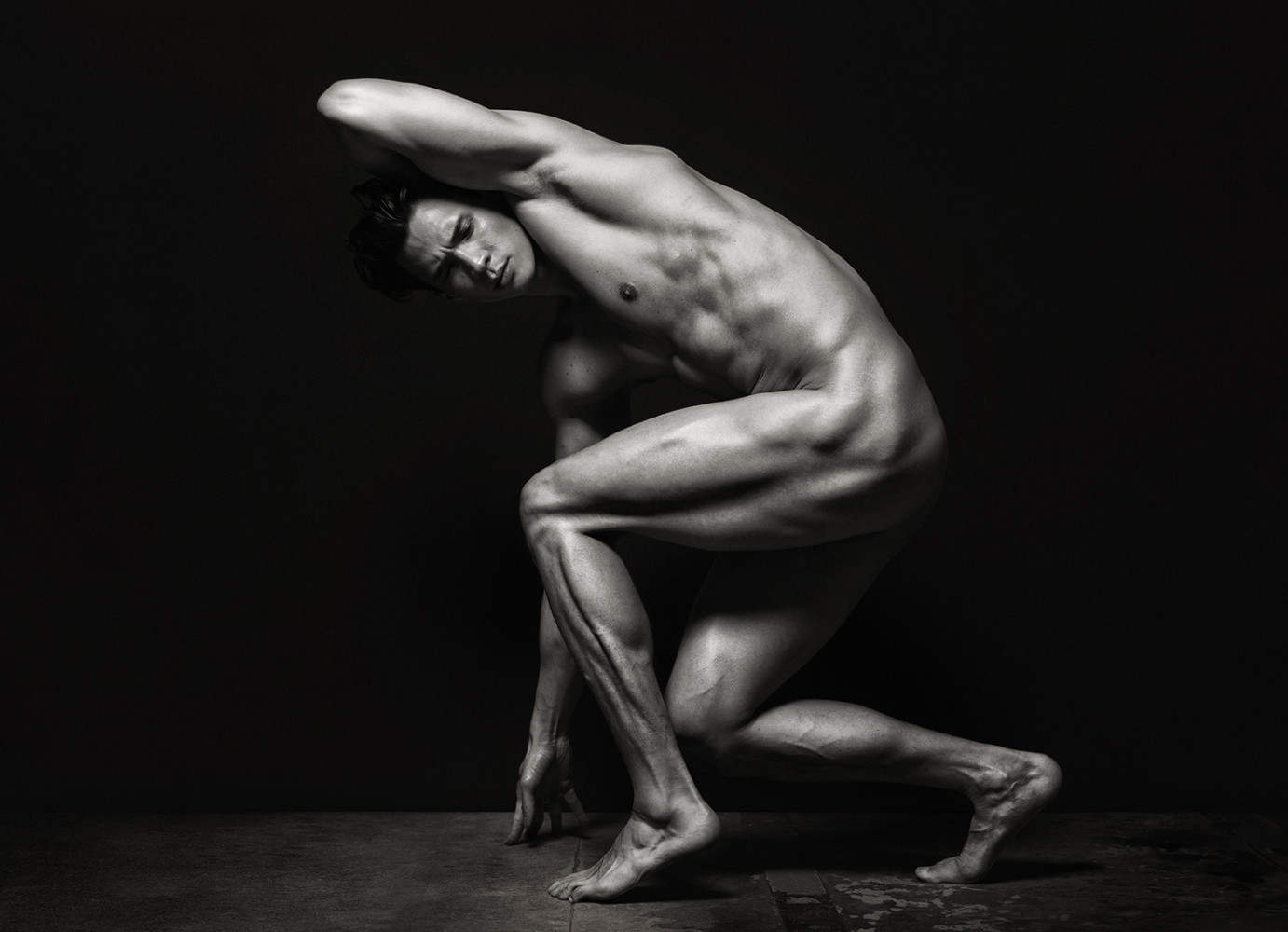
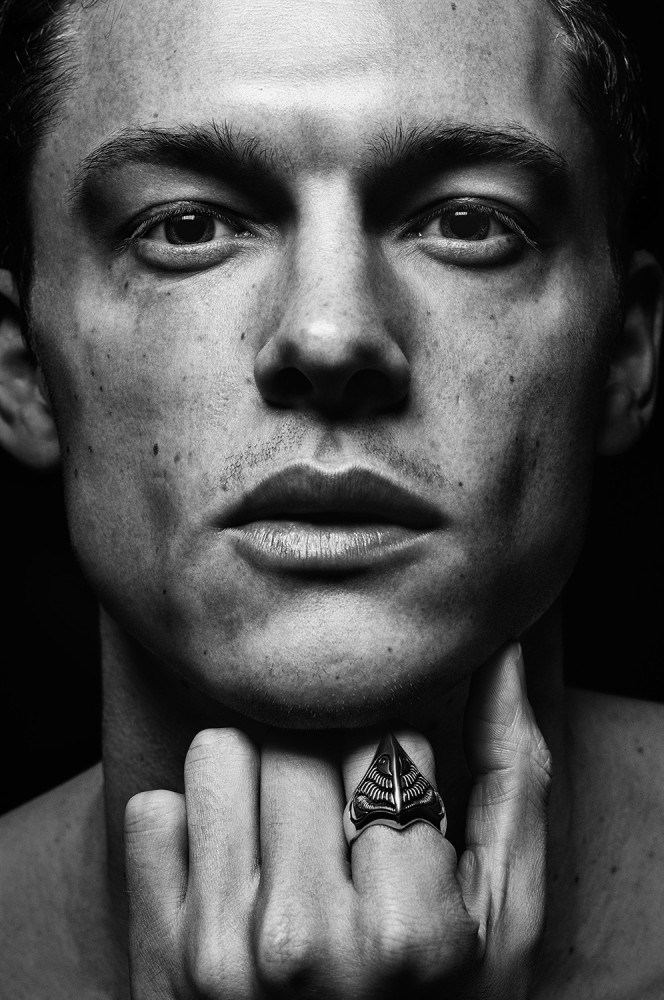
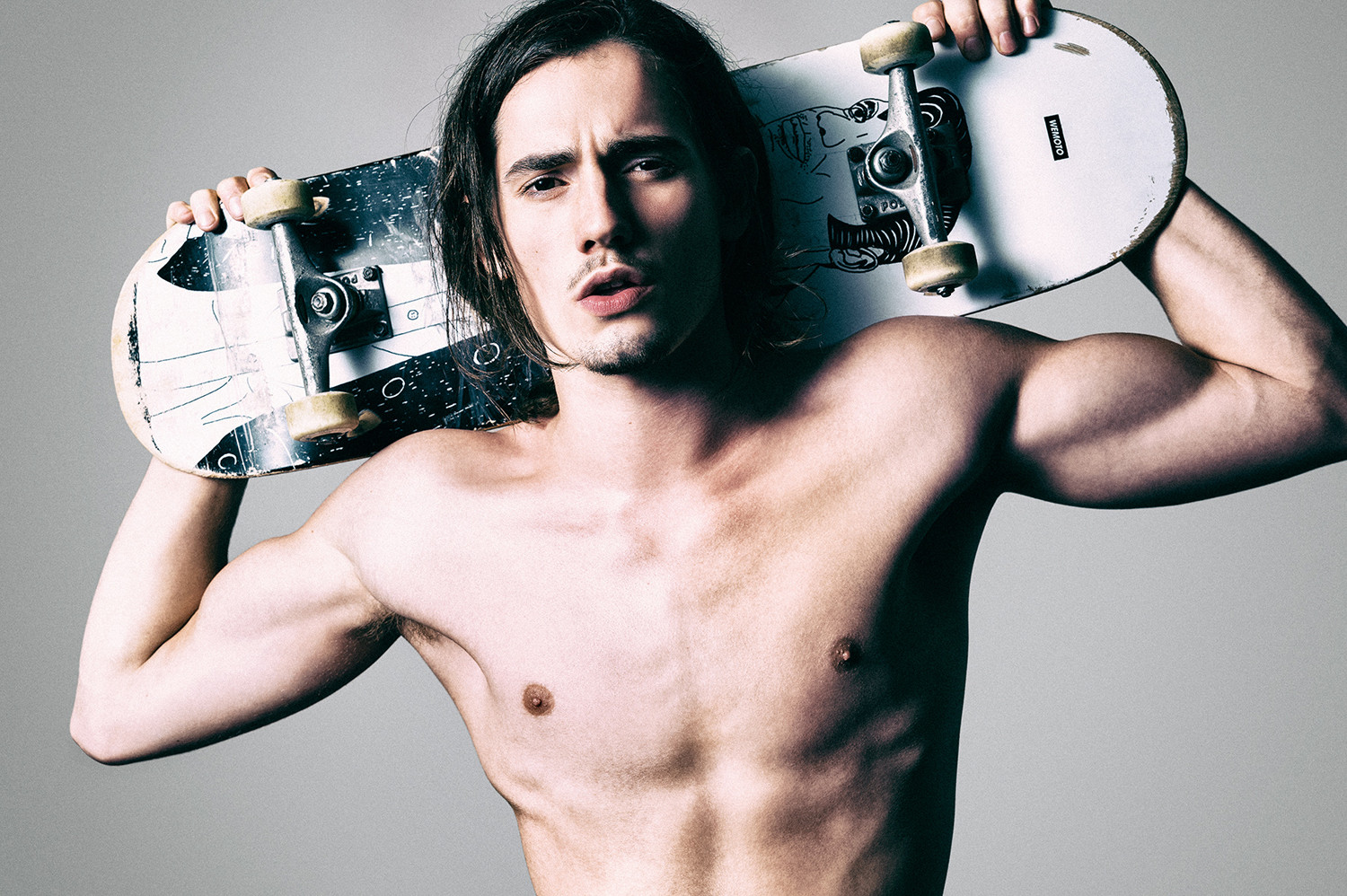
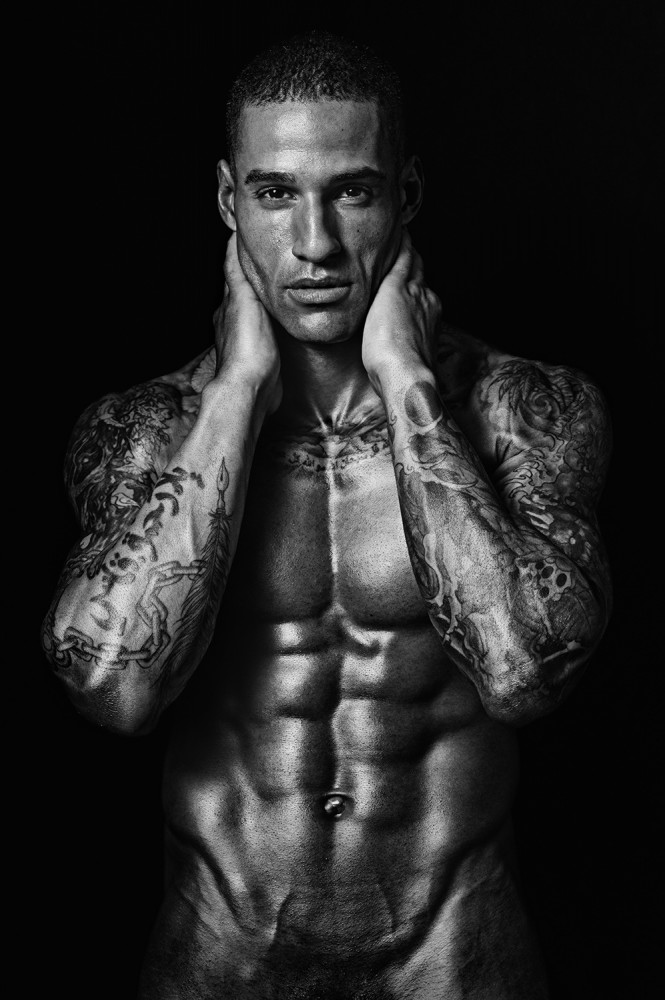
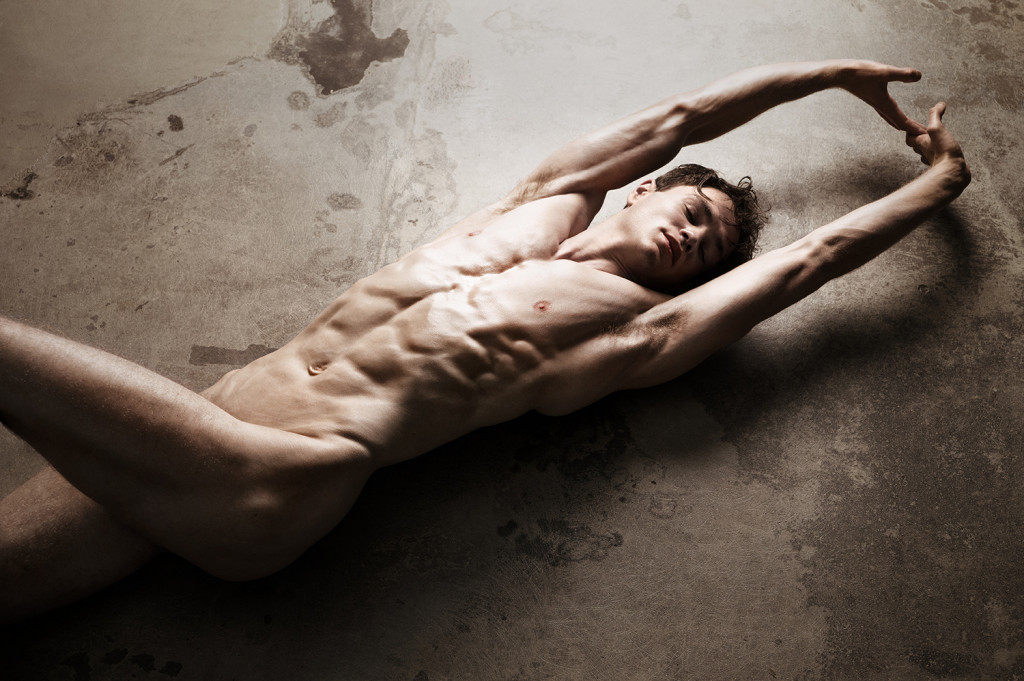
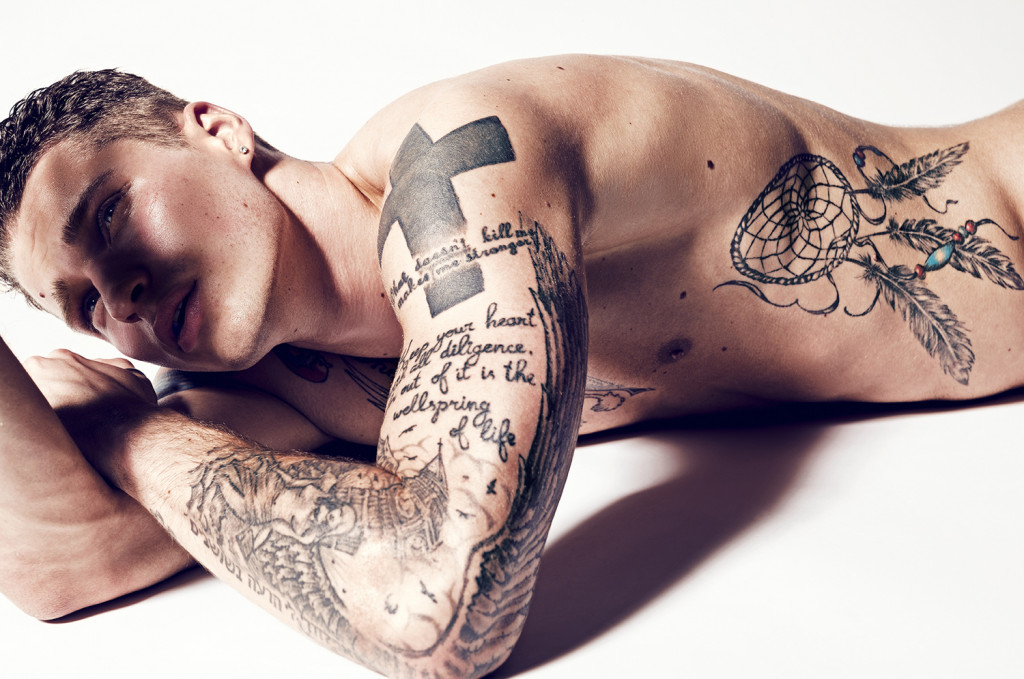
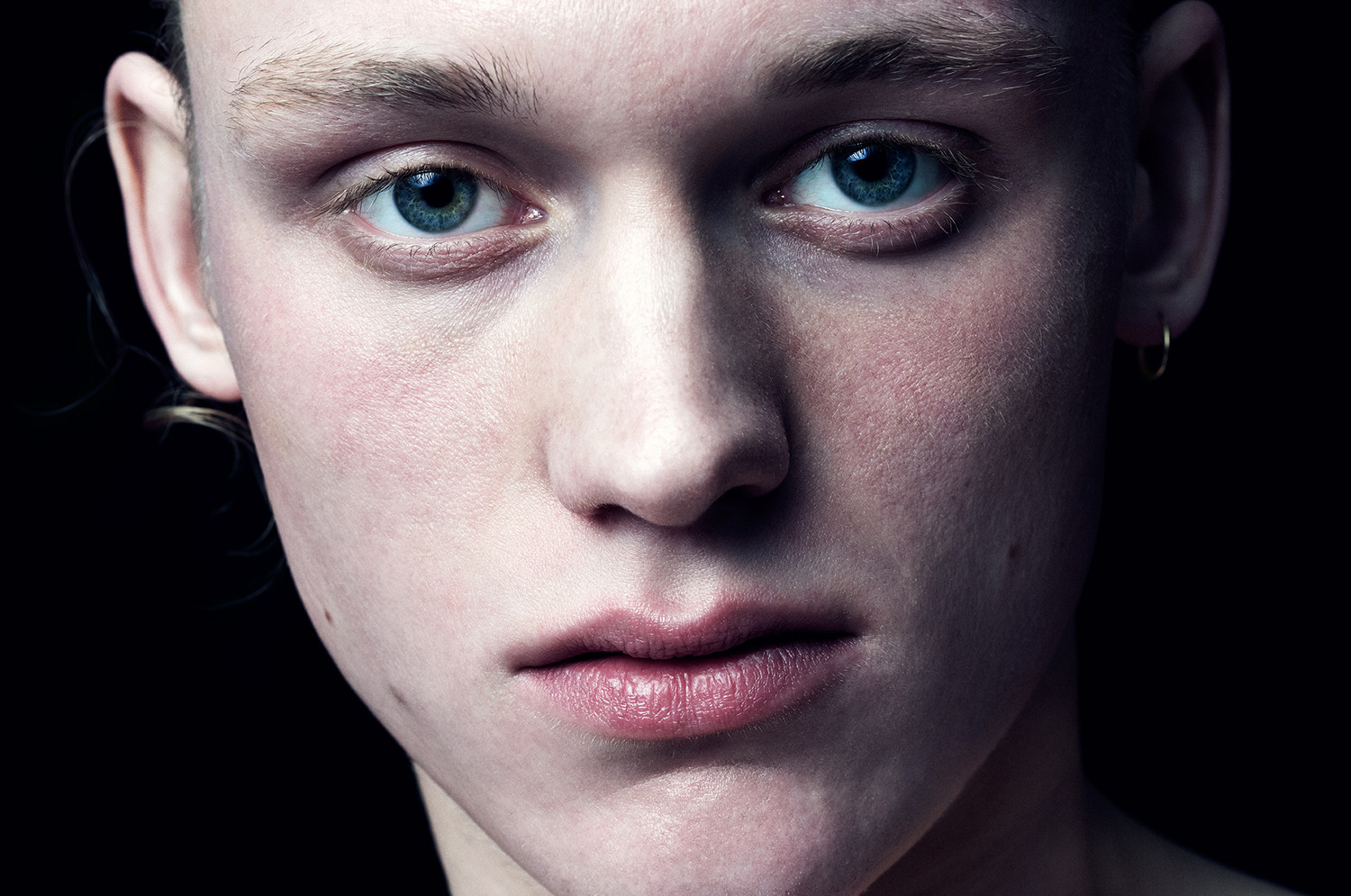










INTERVIEW
Reno Mezger
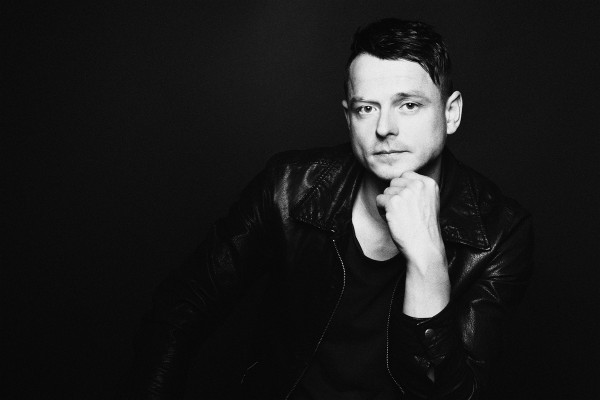
PHOTOGRAPHY Reno Mezger ART DIRECTION Uta von Fintel MODEL AGENCIES KULT Model Agency, MD Management, Modelwerk, PLACE Models, PMA Promod Model Agency, The SQUIREmgmt PARTNERS Elektronische Schönheit, Knackscharf Rent, 711 Rent MUSIC/VIDEOS Sven Kacirek CAMERA Leica S (007) with Summarit-S 70mm f/2.5 Asph. (CS) and APO-Summarit-S 120mm f/2.5 (CS), additional for videos Leica SL with Vario-Elmarit-SL 24–90 mm f/2.8–4 Asph.
For “A Celebration of Man”, Reno Mezger and Art Director, Uta von Fintel, focussed on male nudes. For the professional models involved in the production, it was not about taking on a role, but rather about expressing their personalities by interacting with the photographer.
S Magazine: What does “A Celebration of Man” deal with?
A “Celebration of Man” is a visual art project combining nude photography and film. It only shows men of different age groups. All the men are professional models from renowned agencies and they pose naked.
Why do you only show naked men and why did you choose exclusively professional models?
Coming from the fashion scene it’s natural for us to work with models. Models suit our ideas of aesthetics; yet, even so, there are very different types of anatomy, which can be considered beautiful or just distinct. The challenge is to work with what you have and create your own personal aesthetics. There is no additional help: it’s all about the man, the “intrinsic” person – it either works or it doesn’t. That’s the artistic challenge.
Sometimes there are shapes of muscles or anatomic particularities, and it’s about physicalness. The essence is nakedness, the physical form. It isn’t covered, there’s nothing to distract, it’s very pure.
How did the agencies and models react to your project?
It varied a lot. Everything from support and euphoria to complete rejection. It depends on who you’re dealing with and their approach to the question of nudity.
The men reacted very individually. It’s very different from one person to the next; right from the beginning, some are less reserved than others. The models’ prior knowledge about the project is also varied, because posing naked is not a part of a fashion model’s everyday life. It’s very fascinating to see how the models deal with their personal limitations.
The longer the men spend with us during the photo shoot, the more their trust grows, and the more they engage with us, the more relaxed they become.
Photographing naked men was a new theme for you. How did you approach the subject and where did you see the difficulties?
Photographing the men was a new theme, but not our dealings with the theme of nudity or nakedness. Staging forms and bodies and the visual design play a big role in every picture. The state of undress makes another type of emotional expression and aesthetics possible.
Regarding difficulties, our approach to the subject was to be unconcerned, we just began to work. It is clear that society may well place the presentation of nude male bodies in a certain photographic genre or box, but that’s not what our motifs are about. Nude photography is about physicalness and is free of any sexual connotations.
Did you want the theme of male nudity to be provocative or did you want to pick up on an old theme from the world of art?
Why should a naked man be more provocative than a naked woman – they are both people? Apart from the gender-specific anatomic differences, in a picture the bum of a man is just like a female one. If nowadays that’s provocative, then it’s justified. There were times when you saw a lot more males nudes than female. Something must have happened at some point to change that around.
What role does eroticism play in this work?
Eroticism doesn’t play a role on the set. Even in a more intimate atmosphere, when you’re working with less people, it only serves to create a safe space. As to whether someone afterwards finds the picture erotic is up to each individual. That can’t be controlled. You can’t impose a way of looking at something and we don’t aim to do so.
How far did you want the posing to go? To what degree did the models themselves have an influence on it? And how did the men react?
What and how much the model wants to express is decided by the model himself. The interaction while photographing defines the picture, the feeling for the model influences poses and emotions that then become visible in the picture per se. It is an intuitive, flowing way of working – dependent on the moment. The things we create also include something of the creator.
Normally, a model represents something that’s being sold. In this project, their essential being is acknowledged, which is why the men show themselves differently – they’re more personal and approachable. It’s a gift for both sides, and it’s important for the picture. The reactions are positive; they are often proud of themselves and of what they have achieved, sometimes euphoric – like when your courage has been put to the test.
How did the decision to realise this project as a book come about?
Next to exhibiting in galleries, the book is the most prestigious step, the climax of the project. Precisely nowadays, when everything flickers across the screen, on Facebook, Instagram and so on, the project deserves something of special value.
In addition to the photos you made videos. What role do they play within the project?
The book will be the outcome of the project, but, of course, other media can also play a role – also in the accompanying exhibition. The aesthetic realisation is subject to different principles in photography and film. In some cases, an effect increases in a moving picture, while a photo captures the moment and can intensify it. They are similar and yet very different mediums that produce the same artistic expression. Film is the logical sequel to the photos and enriches the project on another level. It’s demanding and has great appeal.
The project has not yet been completed. How many men do you want to photograph and when will the project be finished?
In fact, at first the plan was 50 men, with different appearances, different ages, the largest diversity. Maybe it will be more, the framework of the content needs to be filled. At some point the feeling that the goal has been fulfilled will be there. In the back of our minds we’re thinking mid 2017.
The production – photos and videos – was done exclusively with the Leica S and the Leica SL. How did that influence the work process in the photography?
I use different camera systems that, first of all, need to meet my demands for each assignment or for the job, they have to function technically and keep up with my pace. We’re talking about pure functionality. The camera is my instrument, and in this regard I was influenced by the standard set by Leica. Leica stands for precision and perfect technology, but I’m also delighted by the artistic background that is part of the company’s history.